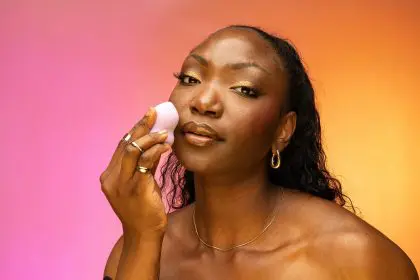Those headphones that have become practically glued to your ears aren’t just delivering your favorite music and podcasts, they’re quietly creating a cascade of health problems that most people never connect to their audio habits. From hearing damage that happens so gradually you don’t notice it until it’s too late, to social isolation that’s rewiring your brain, your constant headphone use is affecting your health in ways that go far beyond what you’d expect.
The modern world has made headphones feel essential for productivity, entertainment, and even basic social functioning, but this dependency is creating unprecedented health challenges that previous generations never faced. Your ears, brain, and entire nervous system are being subjected to constant artificial stimulation that your body wasn’t designed to handle for hours every day.
What makes headphone-related health problems particularly insidious is how they develop slowly and subtly, often masquerading as unrelated issues like fatigue, social anxiety, attention problems, or mysterious aches and pains. By the time you realize your headphones might be contributing to these problems, the damage may already be significant and potentially permanent.
Why your ears are screaming for help silently
Your ears contain some of the most delicate structures in your entire body, including tiny hair cells that convert sound waves into electrical signals your brain can interpret. These hair cells are incredibly fragile and can be permanently damaged by sound levels that don’t even feel uncomfortably loud, especially when that exposure happens for hours every day.
The proximity of headphone speakers to your eardrums creates sound pressure levels that can be much more damaging than environmental noise at the same volume. When sound is delivered directly into your ear canal, even moderate volumes can create harmful pressure waves that gradually destroy the sensitive structures responsible for hearing.
Noise-induced hearing loss often begins in the high-frequency ranges that are crucial for understanding speech, but these changes happen so gradually that you might not notice them until they significantly impact your ability to follow conversations or hear important environmental sounds like alarms or approaching vehicles.
The constant presence of artificial sound also prevents your ears from experiencing the periods of quiet they need for cellular repair and recovery. Your auditory system never gets a chance to rest and restore itself, leading to accelerated wear and tear that can result in permanent hearing damage.
The brain fog epidemic hiding in your playlist
Constant audio input through headphones can actually impair your brain’s ability to process information efficiently, creating a state of chronic mental fatigue that many people mistake for normal modern life stress. Your auditory processing centers become overworked and less capable of filtering important sounds from background noise.
The continuous stimulation from headphones can interfere with your brain’s natural attention regulation systems, making it harder to focus when you’re not wearing them and creating a dependency on artificial stimulation to maintain concentration. Your brain essentially becomes addicted to constant audio input.
Many people report difficulty thinking clearly or feeling mentally scattered when they’re not wearing headphones, which indicates that their brains have adapted to constant external stimulation and lost some ability to generate internal focus and creativity. This cognitive dependency can significantly impact mental performance and creativity.
The lack of mental quiet time that comes with constant headphone use prevents your brain from engaging in the kind of unstimulated processing that’s essential for memory consolidation, creative thinking, and emotional regulation. Your mind never gets the silence it needs to function optimally.
How headphones are hijacking your social brain
Wearing headphones sends a clear social signal that you don’t want to be approached or engaged, which can gradually isolate you from spontaneous human interactions that are essential for mental health and social skill development. This isolation becomes self-reinforcing as your comfort with social interaction decreases.
The reduction in environmental awareness that comes with headphone use means you miss important social cues like conversations happening around you, approaching people who might want to interact, or even emergency situations that require social cooperation. Your social radar essentially gets turned off for hours each day.
Constant headphone use can atrophy the social skills that require practice to maintain, such as reading facial expressions, interpreting tone of voice in natural environments, and engaging in spontaneous conversations. These skills deteriorate when not regularly exercised through real-world social interaction.
The artificial social connection provided by podcasts, audiobooks, and music can create an illusion of social engagement that actually reduces your motivation to seek out real human connection. Your brain gets some of its social needs met artificially, reducing the drive to form genuine relationships.
The posture problems that start in your ears
Headphone use often coincides with extended periods of poor posture, whether you’re hunched over a computer, looking down at a phone, or slouching while relaxing. The audio engagement can make you less aware of postural strain and more likely to maintain harmful positions for extended periods.
Heavy headphones can create neck strain and tension headaches by adding weight and pressure to your head and neck area. Over time, this additional weight can contribute to forward head posture and cervical spine problems that affect your entire musculoskeletal system.
The immersive nature of headphone audio can reduce your awareness of physical discomfort, causing you to maintain cramped or strained positions much longer than you would if you were more tuned into your body’s signals. This reduced body awareness can lead to chronic pain and movement dysfunction.
Wire management and the need to keep devices close to your body can force you into awkward positions or restrict your movement in ways that contribute to repetitive strain injuries and postural problems that develop over time.
The sleep disruption you don’t see coming
Many people use headphones right up until bedtime or even fall asleep wearing them, not realizing that this audio input can significantly disrupt sleep quality and natural circadian rhythms. Your brain needs a gradual wind-down period without stimulation to prepare for restorative sleep.
The blue light emitted by devices connected to headphones, combined with the cognitive stimulation from audio content, can suppress melatonin production and delay sleep onset. Even audio-only content can keep your brain in an alert state that interferes with the natural transition to sleep.
Sleeping with headphones can create physical discomfort that fragments sleep throughout the night, preventing you from achieving the deep sleep stages necessary for physical recovery and cognitive processing. The pressure and positioning of headphones can also cause ear pain and increase ear infection risk.
The content you listen to through headphones before bed can influence your dreams and sleep quality in ways you might not realize. Exciting, stressful, or emotionally engaging audio can carry over into your sleep, creating more fragmented and less restorative rest.
The hidden ear infections and hygiene crisis
Headphones create a warm, moist environment in your ears that’s perfect for bacterial and fungal growth, especially if you wear them for hours daily or share them with others. This can lead to chronic ear infections, irritation, and other problems that compromise your ear health over time.
The accumulation of earwax and dead skin cells can be exacerbated by headphone use, as the devices can push debris further into your ear canal and interfere with your ear’s natural self-cleaning mechanisms. This buildup can cause hearing problems and increase infection risk.
In-ear headphones and earbuds can introduce bacteria and other contaminants directly into your ear canal, especially if they’re not cleaned regularly or if you use them in different environments throughout the day. Your ears become a breeding ground for microorganisms that can cause serious problems.
The sharing of headphones, whether intentional or accidental, can transmit bacteria, viruses, and even parasites between users. Schools, gyms, and other communal environments where headphones are shared create particular risks for spreading ear-related infections and conditions.
The balance and spatial awareness problems nobody mentions
Constant headphone use can impair your natural spatial awareness and balance by masking important environmental audio cues that your brain uses to maintain equilibrium and navigate space safely. Your balance system relies partly on auditory input that gets disrupted by artificial audio.
The lack of natural environmental sounds can affect your ability to judge distances, detect approaching objects or people, and maintain awareness of your physical surroundings. This reduced spatial awareness can increase accident risk and make you less coordinated in physical activities.
Your brain’s ability to process natural acoustic environments deteriorates when it’s constantly receiving artificial audio input. This can make you feel disoriented or overwhelmed when you’re in naturally noisy environments without your headphones.
The inner ear structures responsible for balance can be affected by the constant pressure changes and sound waves from headphones, potentially contributing to dizziness, vertigo, or other balance-related problems that seem unrelated to your audio habits.
The attention span destruction that feels normal
Constant access to audio entertainment through headphones can severely impact your ability to tolerate silence, boredom, or unstimulated thinking time. Your brain becomes dependent on external stimulation and loses the ability to generate internal focus and creativity during quiet moments.
The rapid switching between different audio content, from music to podcasts to phone calls, fragments your attention and reduces your ability to engage deeply with any single activity. Your brain gets trained for constant stimulation switching rather than sustained focus.
Many people find that they can’t perform basic tasks like cleaning, cooking, or exercising without headphones, indicating that their brains have become dependent on external stimulation to maintain motivation and attention. This dependency can significantly impact productivity and life satisfaction.
The instant gratification provided by always having entertaining audio available can reduce your tolerance for activities that require patience, persistence, or delayed gratification. Your attention span gets conditioned for immediate reward rather than sustained effort.
Simple strategies to break the headphone dependency
Implementing headphone-free periods throughout your day allows your auditory system to rest and recover while giving your brain opportunities for the kind of quiet processing that’s essential for mental health. Start with just 30 minutes of complete audio silence and gradually increase these periods.
Using speakers instead of headphones when possible reduces the direct pressure on your ears while still allowing you to enjoy audio content. This gives your ears a break from the intense, close-proximity sound while maintaining your audio habits.
Lowering headphone volume to levels where you can still hear environmental sounds helps protect your hearing while maintaining some awareness of your surroundings. If you can’t hear someone talking to you at normal volume, your headphones are too loud.
Taking regular breaks from headphones during long listening sessions allows your ears to recover and prevents the buildup of pressure and moisture that can lead to infections and irritation. Even brief 5-10 minute breaks can make a significant difference.
Your ears weren’t designed for this
The human auditory system evolved to process natural environmental sounds, not the intense, prolonged artificial audio input that modern headphone use provides. Your ears and brain are being subjected to conditions they weren’t designed to handle, leading to problems that previous generations never experienced.
The health impacts of chronic headphone use are still being discovered as this technology is relatively new in human history. You’re essentially participating in a massive, uncontrolled experiment on the effects of constant artificial audio stimulation on human health and development.
Taking control of your headphone habits isn’t just about protecting your hearing, it’s about preserving your ability to think clearly, connect with others, and engage fully with the world around you. Your ears, brain, and entire well-being depend on finding a healthier balance with audio technology.

















